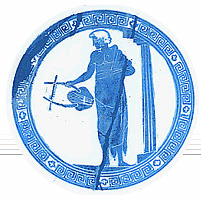| RHYTHM
|
 |
|
 |
Rhythm
is the time aspect of music or the way sound in arranged
through patterns of time. In many ways we feel rhythm in
our heartbeat and when we breath and walk. There is also
a sense of rhythm in the recurring pattern of day and night,
the four seasons of the year and the rise and fall of the
tides. In music it occurs in patterns of tension and release
and in through musical expectation and fulfillment.

| BEAT |
 |
|
 |
The basic recurring unit of time in music is beat. A beat
is the physical part of the music that makes us tap our
toe, clap our hands or move our body. Beats form the background
against which a composer or musician place notes of varying
length. Expression is felt right away by rhythm. How we
hear the beat can tell us if a piece of music is a march,
a dance, a forceful powerful gesture or a gentle flowing
elegance.
| ACCENT |
 |
|
 |
An
accent is when a note or group of notes are emphasized
or played more loudly then notes around it. An accent
can be felt or heard. A sound can be emphasized, (or accented)
by being held longer , by being higher in pitch than nearby
notes or simply played stronger (or louder) than surrounding
notes. The most straightforward way to play an accent
is to alternate between one accented count and one unaccented
count. A strong beat followed by a weak beat. ONE –
two, ONE – two.
| METER |
 |
|
 |
A
group of beats that are defined by patterns of strong
and weak pulses is called meter. Meter can be felt or
heard. It is when a strong accented beat (usually the
ONE or first beat of the pattern) is followed by one or
more weaker beats. This forms a recurring pattern in music.
The two basic beat patterns or meters in music are duple
and triple. An example of duple meter is a march, where
the LEFT – right – LEFT – right,
is best represented by STRONG – weak, STRONG
– weak. An example of triple meter is a typical
waltz, ONE – two – three, ONE –
two – three or the tune to Clementine, OH
my dar ling, OH my dar
ling.
Duple
Meter
ONE
– two – ONE –
two – etc.
Triple
Meter
ONE
– two – three – ONE –
two – three – etc.
Two
additional meters found much less frequently in music, are
compound meter and mixed meter. In compound meter you have
more than one meter at the same time. For example a simultaneous
occurrence of duple and triple. 1 2 3 4 5
6. In mixed meter, two opposing meters happening one right
after another. For example Dave Brubeck’s “Take
Five” 1 2 3 4 5. “Take Five”
is an example of a triple meter followed by a duple.
Compound
Meter
ONE
– two – three – FOUR – five
– six – etc.
Mixed
Meter
ONE
– two – three – FOUR – five
– etc.
| SYNCOPATION |
 |
|
 |
One
way composers and musicians spice up the rhythm and give the
music a sense of surprise and uplift is by adding what is
called syncopation. Syncopation is when a normally weak beat
produces an emphasis. Syncopation is putting the accents off
the beat. A lot of jazz syncopation puts the accents on the
"ands" in-between the beats rather than putting
the accent on either the strong or the weak beats. One –
two – AND – three – four – AND .
Straight
meter Syncopation
ONE
– two – THREE – four – one
– TWO – three – FOUR
Another
way to think of it is:
Straight
NOTHing
COULD be FINer THAN to BE in CAroLINa
IN the MORning.
Syncopated:
noTHING
could BE finER than TO be IN caROlinA
in THE morning.
| TEMPO |
 |
|
 |
The
rate of speed at which a piece of music is to be played or
sung is called tempo. Choosing the right tempo for a musical
composition is one of the most important factors in making
a work musical and meaningfully coherent. Traditional tempo
marks are given in Italian and leave considerable freedom
to the performer. They are as follows:
In
a classical composition, up until the Romantic era (1828),
tempos were often the titles for compositions or movements
from larger works. Because tempo marks such as Allegro or
Andante leave substantial room for variants of fast or moderately
slow, a performer can be guided by a metronome. A metronome
is a type of mechanical clock that beats time. It can pulse
out various beats at exact divisions of time. It is calibrated
for clicks per minute and depending on what setting it is
placed it will beat time from 40 beats a minute to 208 beats.
It was invented by Johannes Maelzel in 1813. Maelzel was a
friend of Beethoven and he was one of the first important
composers to place exact metronome marks in musical scores.
We
associate fast tempos with energy, drive and excitement and
we associate slow tempos with solemnity, lyricism or calmness.
This is because of our standing heart beat is from 60 to 75
beats a minute. Any beat faster or slower than our heart beat
we perceive as fast or slow.
 |
Largo,
Lento
– 40-52 (beats per minute) |
 |
Adagio
– 54-66 |
 |
Andante
– 69-76 |
 |
Moderato
– 76-112 |
 |
Allegro
– 116-160 |
 |
Presto
– 168-208 |


